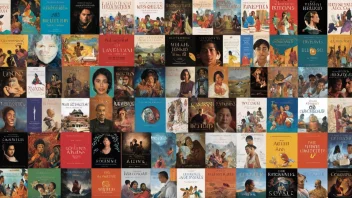Classic young adult novels have a unique ability to resonate across generations, offering insights into the complexities of adolescence, morality, and society. In this article, we will delve into two quintessential young adult novels: J.D. Salinger's 'The Catcher in the Rye' and Harper Lee's 'To Kill a Mockingbird.' Both novels explore themes of identity, integrity, and the loss of innocence, yet they do so through different lenses and narrative styles. This comparison will highlight their distinctive qualities, strengths, and weaknesses, ultimately revealing why these works remain relevant today.
Overview of the Novels
'The Catcher in the Rye' was published in 1951 and follows the journey of Holden Caulfield, a disenchanted teenager navigating the complexities of adulthood in post-war America. Through his cynical lens, readers are introduced to a world filled with phoniness and alienation.
On the other hand, 'To Kill a Mockingbird,' published in 1960, is narrated by Scout Finch, a young girl in the racially charged American South during the 1930s. The story centers around her father, Atticus Finch, who defends a black man accused of raping a white woman, exposing the deep-rooted prejudices of society.
Character Development
Holden Caulfield: A Complex Anti-hero
Holden Caulfield is a quintessential anti-hero whose complexities reflect the challenges of adolescence. His internal struggles with depression and alienation make him a relatable figure for many readers. However, his constant criticism of the world around him can be seen as off-putting, potentially alienating readers who seek a more positive portrayal of youth.
Scout Finch: Innocence and Growth
In contrast, Scout Finch embodies innocence and growth. Her perspective as a child allows readers to witness the harsh realities of racism and injustice without the heavy burden of cynicism. Scout’s journey from innocence to awareness is uplifting and ultimately provides a beacon of hope amidst societal darkness.
Thematic Exploration
Alienation and Identity in 'The Catcher in the Rye'
One of the central themes of 'The Catcher in the Rye' is alienation. Holden's struggle to connect with others highlights the challenges of finding one’s identity in a world that often feels superficial and insincere. This theme resonates strongly with contemporary youth who grapple with similar feelings of isolation in an increasingly digital and disconnected society.
Morality and Social Justice in 'To Kill a Mockingbird'
'To Kill a Mockingbird' tackles themes of morality and social justice, questioning the moral fabric of society. Atticus Finch serves as a moral compass, teaching Scout and her brother Jem about empathy, integrity, and the importance of standing up for what is right. These lessons remain pertinent today, as discussions about race and justice continue to dominate societal discourse.
Narrative Style and Structure
Salinger’s Stream of Consciousness
J.D. Salinger employs a stream of consciousness narrative style in 'The Catcher in the Rye,' allowing readers to experience Holden's thoughts and emotions in real-time. This style creates an intimate connection between Holden and the reader, making his struggles feel tangible. However, some readers may find this approach disorienting, as it lacks a traditional plot structure.
Lee’s Linear and Engaging Narrative
In contrast, Harper Lee utilizes a more linear narrative structure in 'To Kill a Mockingbird,' which provides clarity and pacing to the story. The juxtaposition of Scout’s childhood innocence with the serious themes of racism and injustice creates a compelling narrative that is both engaging and thought-provoking. This structure makes the novel accessible to a wider audience, including younger readers.
Cultural Impact and Legacy
The Enduring Influence of 'The Catcher in the Rye'
'The Catcher in the Rye' has left an indelible mark on literature and culture, often cited as a defining work of adolescent literature. Its exploration of mental health and the quest for identity has paved the way for future young adult literature, influencing countless authors and resonating with readers who feel marginalized or misunderstood.
'To Kill a Mockingbird' and Its Social Relevance
'To Kill a Mockingbird' has also had a profound impact on American literature and culture, often included in educational curricula to teach students about empathy and social justice. Its portrayal of racial inequality and moral courage continues to spark discussions about ethics and humanity, making it a timeless classic that remains relevant in today’s society.
Conclusion
In conclusion, both 'The Catcher in the Rye' and 'To Kill a Mockingbird' offer rich explorations of the human experience, albeit through different lenses. Holden Caulfield’s journey reflects the struggles of identity and alienation, while Scout Finch’s story illuminates the importance of empathy and moral integrity. While both novels have their strengths and weaknesses, they undeniably remain relevant today, providing insights into the complexities of adolescence and society. Readers seeking to explore the depths of human emotion and the challenges of growing up would benefit from engaging with both of these classic works.






